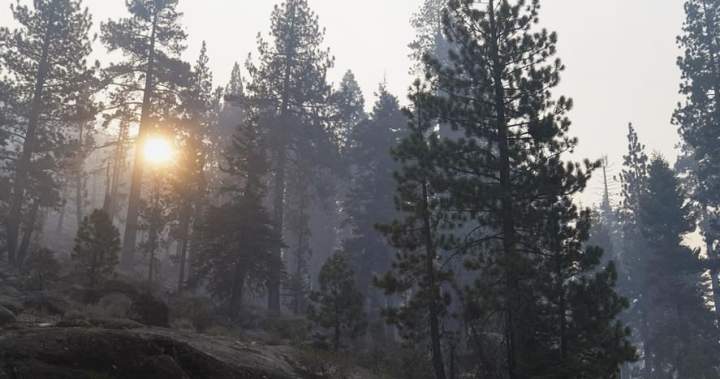Since early June, Eastern Canada has seen significantly less rainfall than usual — a sharp contrast to last summer, when many regions recorded above-average precipitation.
According to Global News Meteorologist Ross Hull, many cities including Toronto, Halifax, and St. John’s are experiencing 50 per cent or less of normal rainfall since the start of meteorological summer on June 1st, and many cities have also not experienced any measurable rainfall so far this month.
In Nova Scotia, Halifax Water has asked residents to voluntarily conserve water due to low supply levels amid a drought in the province.
The utility said due to a long period of dry weather, the water levels are only expected to get worse in the coming days.
Hull says we don’t yet have the scientific ability to connect this recent dry weather event directly to climate change, but we do know that a warming climate can lead to both hot, dry weather as well as flooding events.
“We’ve experienced both of those weather situations over the last couple of years alone,” he added.
Get breaking National news
For news impacting Canada and around the world, sign up for breaking news alerts delivered directly to you when they happen.
Conserving water, water restrictions and burn bans for fire mitigation are a few of the guidelines recommended by officials during droughts.
According to Hull, a dry summer like this one would be difficult to sustain if it happened every year, especially considering that the summer is generally the season with the most precipitation.
He says it’s important to remember that during that time, soaking rains due to only one line of thunderstorms can help to replenish some of the rain deficit, however, the risk with that is potential flooding if one area experiences too much rain at once especially if the ground is already dry.
But when the weather stays dry for long periods, Hull says “irrigation becomes more important under these conditions which can be costly to farmers.”
‘Moderate to extreme drought’
According to Environment Canada’s June 2025 drought assessment, below-normal precipitation and warm temperatures resulted in an overall increase in drought extent and severity in June.
Precipitation was below normal for much of southeastern Ontario and much of Atlantic Canada.
By the end of the month, 62 per cent of the country was classified as ‘Abnormally Dry’ or ‘Moderate to Extreme Drought’, including 66 per cent of the country’s agricultural landscape.
In June, the southern regions of New Brunswick and much of Nova Scotia received less than 85 per cent of normal precipitation.
That same month, southern Ontario and parts of southwestern Quebec received 85 to 200 per cent of normal precipitation, while some localized areas experienced much drier conditions of less 60 per cent of normal monthly precipitation.
Northwestern Ontario, excluding the Thunder Bay area, also recorded less than 85 per cent of normal precipitation. Northern Quebec received 40 to 150 per cent of normal precipitation.
However, extremely high temperatures in the last week of June contributed to rapidly developing drought conditions in parts of southern and eastern Ontario.
© 2025 Global News, a division of Corus Entertainment Inc.
Eastern Canada faces widespread drought conditions after dry start to summer


